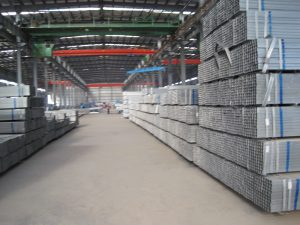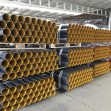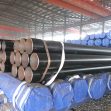The path of low-carbon transformation of steel
Under the “two-carbon” goal, the fundamental path of energy transformation is structural adjustment, transition from fossil energy to renewable energy, and comprehensively improve energy utilization efficiency through multi-energy complementarity. Various industries of China hollow section tube can achieve energy conservation, emission reduction and energy efficiency improvement through power replacement and electrification transformation. In the future, the energy system will face many challenges, such as high proportion of new energy access, high flexible energy scheduling, integrated energy demand and diversified energy trading. For China’s steel industry, there are at least six areas where it can make a difference.

First, we will speed up green development and green systems. If the layout is not reasonable, the ineffective carbon emissions will be very high. Layout optimization coupled with green system can effectively reduce carbon emissions.
Second, we will strengthen energy conservation and improve energy efficiency. For the steel industry especially for structural steel pipe, the application of high-efficiency and energy-saving technologies, especially the construction of a digital and intelligent energy-saving new ecology, can greatly improve energy efficiency and reduce carbon emissions.
Third, optimize energy use and process structure. For example, optimization of raw fuel structure, recycling and utilization of scrap steel resources, increasing the proportion of electric furnace steel, and increasing the proportion of new and renewable energy.
Fourth, we will build an industrial chain of circular economy. The steel industry has the conditions to develop circular economy with related industries and cities, such as steel and building materials, chemical industry, which can promote regional energy integration, improve the utilization of solid waste resources, and reduce carbon emissions of the mild steel tube.
Fifth, the application of breakthrough low-carbon technologies. For example, hydrogen smelting process, oxygen blast furnace and non-blast furnace smelting, carbon capture, utilization and storage technology. Technological breakthroughs are the first step. After that, we need to industrialize and economize the technology. Many problems still need to be solved.
Sixth, institutional development and policy system support. How to set carbon emission reduction targets, how to establish carbon trading market, related standard system, etc. To establish a carbon trading market, we should pay attention to the principle of fairness in construction, and pay attention to carbon tax, which is very important for the low-carbon development of the carbon steel pipe. We should ensure that the price is reasonable and the quota is fair. The formation of carbon trading market will promote the internalization of energy environment externalities and discover prices through carbon trading, thus realizing cost transmission. Through carbon trading market, ineffective and inefficient energy investment impulses can be suppressed, and funds can be effectively directed to low-carbon development fields to achieve optimal allocation.
Tel: +86 18202256900 Email: steel@fwssteel.com










